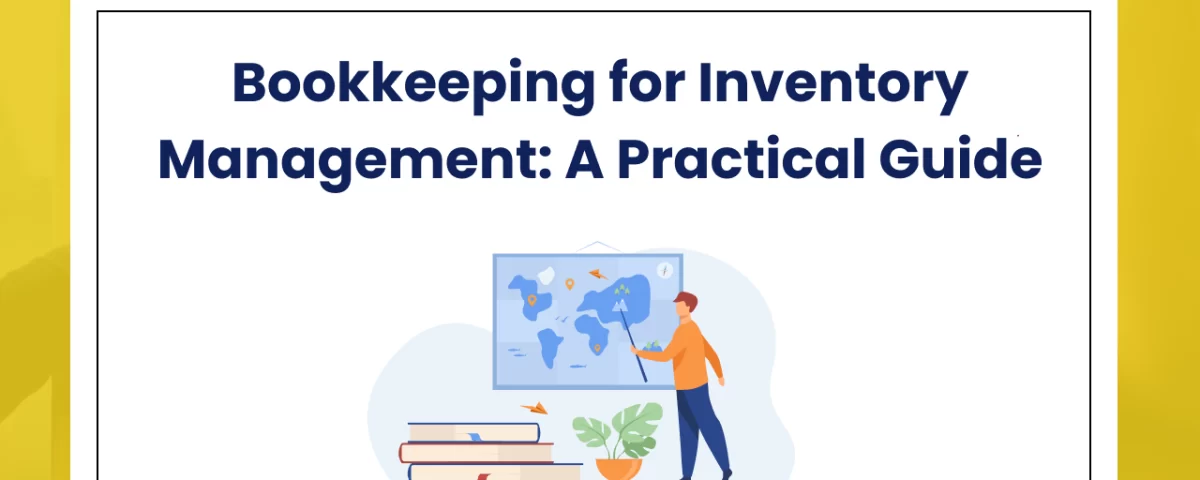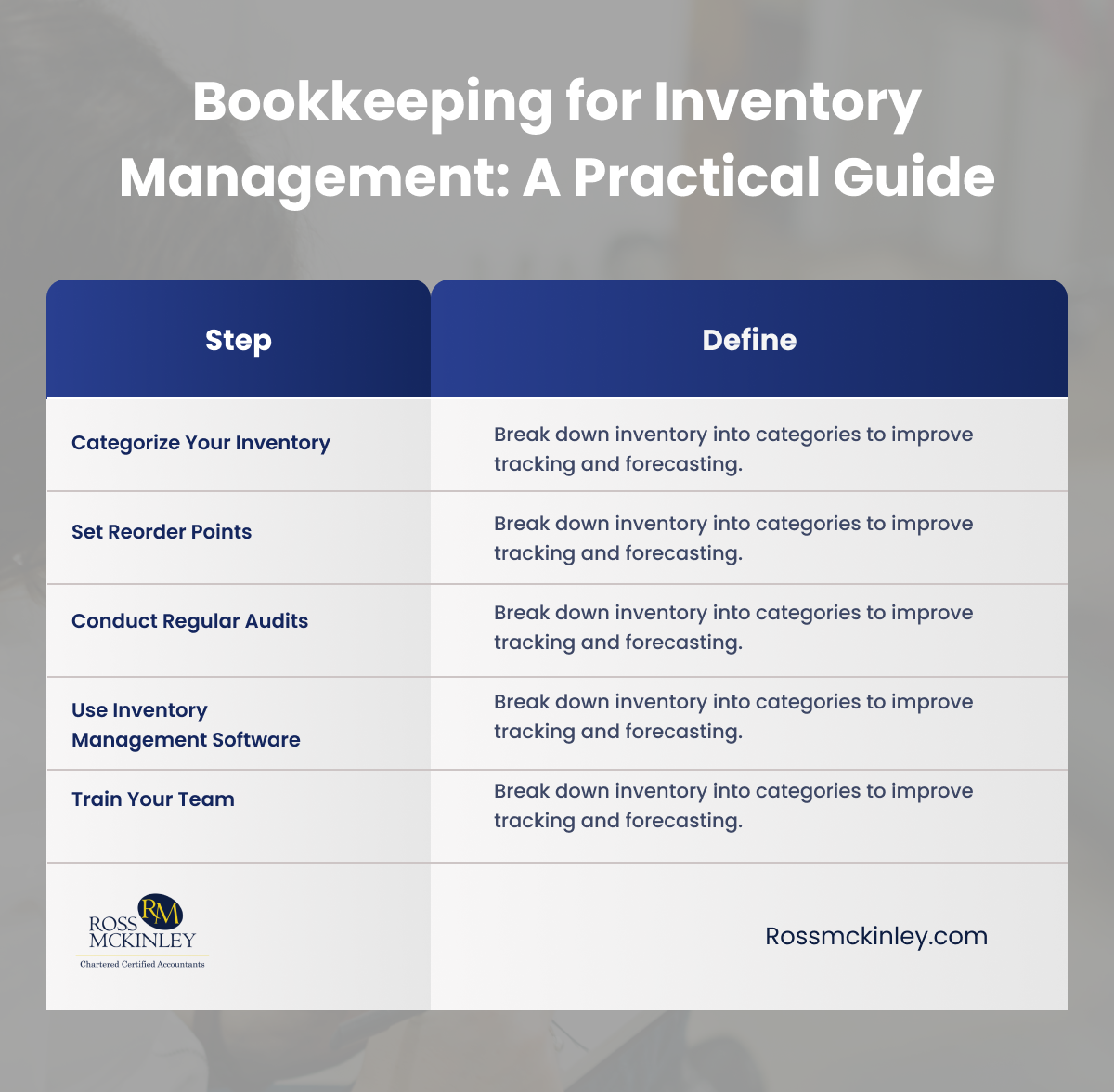
How to Manage Non-Profit Finances Through Bookkeeping
May 23, 2025Bookkeeping for Inventory Management: A Practical Guide

When you think of your business, the first things that come to mind might be marketing strategies, customer service, or even your latest product launch. But here’s the thing: none of those things can succeed without proper inventory management.
Imagine running out of stock just when demand peaks, or worse, holding onto products that nobody wants. The financial impact of these situations can be detrimental, and it all comes back to one thing—bookkeeping for inventory management.
Now, before you roll your eyes and think, “That’s way too complicated for me,” let me assure you, it’s not! With a little knowledge, the right steps, and some organizational systems in place, you can manage your inventory like a pro and keep your business running smoothly.
So, grab your favorite cup of coffee, sit back, and let’s dive into the world of bookkeeping for inventory management!

Table of Contents
What is Bookkeeping for Inventory Management?
In simple terms, bookkeeping for inventory management is the practice of tracking, recording, and managing the flow of goods in and out of your business. It’s all about ensuring that your financial records reflect the true value of the inventory you hold, so you’re not caught off guard when it’s time to report your profits and losses.
But why is it so important? Well, without accurate inventory bookkeeping, you might end up underestimating or overestimating the true value of your goods. This can lead to significant errors in financial statements, tax issues, and even cash flow problems.
Bookkeeping for Inventory Management: A Practical Guide
Managing inventory might seem like a daunting task, but breaking it down into manageable steps can make all the difference. Here’s a practical guide to get you started.
1. Categorize Your Inventory
The first step to successful inventory management is organization. Instead of tracking inventory in a lump sum, break it down into categories that make sense for your business. This could be by product type, size, brand, or sales volume, whatever helps you keep things clear.
For example, if you run a clothing store, categorize your stock into sections like “Men’s Apparel,” “Women’s Apparel,” and “Accessories.” By doing this, you’ll make it easier to track, forecast, and understand your inventory trends.
2. Set Reorder Points
One of the most important aspects of inventory management is knowing when to reorder. Reorder points refer to the minimum stock level you should maintain for each product. When stock drops below this level, it’s time to order more.
For example, if your reorder point for a popular item is 10 units and you’ve sold 8, it’s time to place an order for more.
3. Conduct Regular Audits
Even with the best bookkeeping system, errors can still occur. That’s why regular audits are crucial. Physical inventory audits should be conducted regularly to ensure your records match the actual inventory on hand.
Think of it as a health check for your inventory. By counting your stock and comparing it to your bookkeeping records, you’ll be able to spot discrepancies early and address issues before they grow into bigger problems.
4. Use Inventory Management Software
The days of keeping track of inventory on paper are long gone. Modern businesses rely on inventory management software to automate many of the bookkeeping tasks associated with inventory. Software like QuickBooks, Xero, or other specialized tools can help you.
Using technology not only simplifies the process but also minimizes human errors, saving you time and effort.
5. Train Your Team
You can have the best inventory systems in place, but they’re only effective if your team understands how to use them. Proper training is key to ensuring that everyone from your warehouse staff to your accounting team is on the same page when it comes to inventory processes.
Make sure that your team is familiar with how to record sales, manage stock levels, and report discrepancies.
Inventory Management Methods to Know
Now that we’ve covered the steps, let’s talk about a couple of inventory management methods that are crucial to your bookkeeping efforts.
FIFO (First-In First-Out)
FIFO is a popular inventory accounting method where you assume the first items you purchase are the first ones sold. This method is particularly useful when dealing with perishable goods like food, pharmaceuticals, or items that have an expiration date.
LIFO (Last-In First-Out)
LIFO, on the other hand, assumes the most recent items purchased are the first ones to be sold. This method can be useful for businesses that sell goods that don’t degrade over time and when prices tend to rise.
Weighted Average Cost Method
This method averages out the cost of all units in stock and uses that average cost for both purchases and sales. The weighted average cost method is great for businesses that deal with large volumes of similar products that are difficult to differentiate in terms of cost.
Common Inventory Bookkeeping Mistakes to Avoid
While managing inventory can be relatively straightforward, there are some common mistakes that even seasoned business owners can make. Here are a few to watch out for:
- Not Reconcile Regularly
Failing to reconcile inventory records with actual stock can lead to errors in your bookkeeping. Always conduct regular audits to ensure everything matches up.
- Ignoring Stock Levels
Failing to set reorder points or letting stock run low can cause delays and lost sales.
- Not Using Technology
Relying on outdated methods (like pen and paper) makes the whole process more prone to errors. Leverage technology to automate tracking, ordering, and reporting.
- Mixing Personal and Business Inventory
Ensure that personal items or assets aren’t mixed with your business inventory. This can create confusion when managing stock and preparing tax filings.
Conclusion
Effective bookkeeping for inventory management goes beyond just tracking numbers; it’s about making smart business decisions, boosting cash flow, and ensuring operational efficiency.
By implementing the right practices, you can maintain a streamlined and profitable inventory system.If you need expert help managing your inventory and books, Ross McKinley Bookkeeping Services is here to assist you.
With our tailored solutions, you can ensure your inventory and finances are always in top shape, giving you the peace of mind to focus on growing your business.
